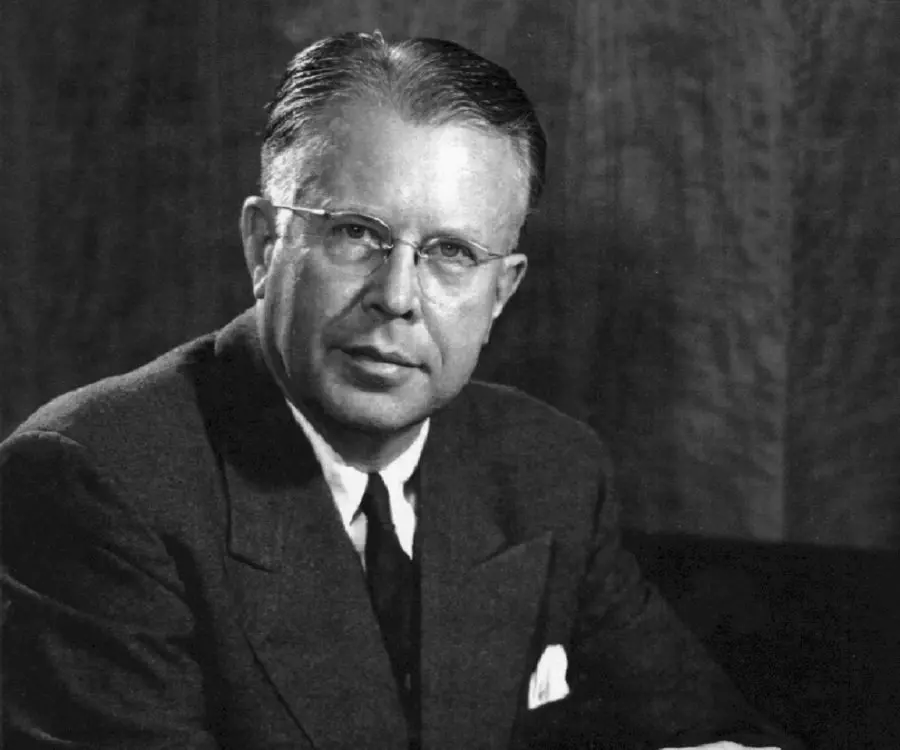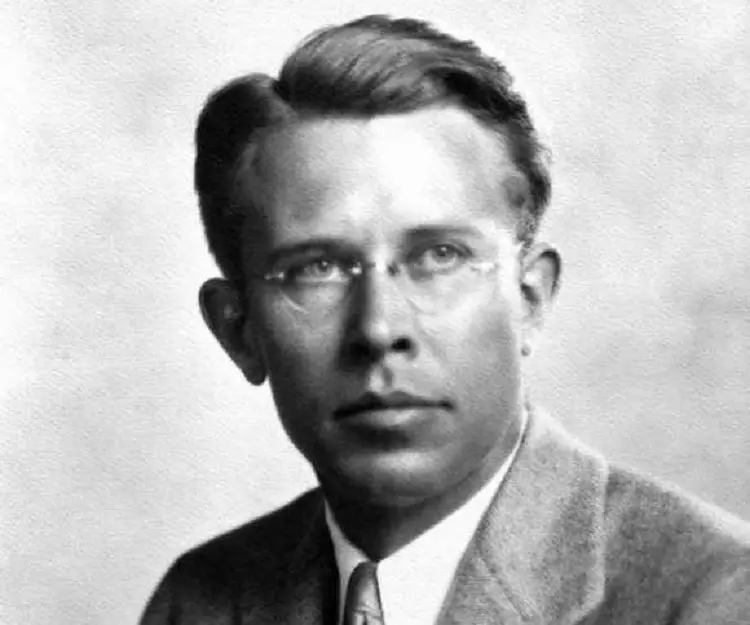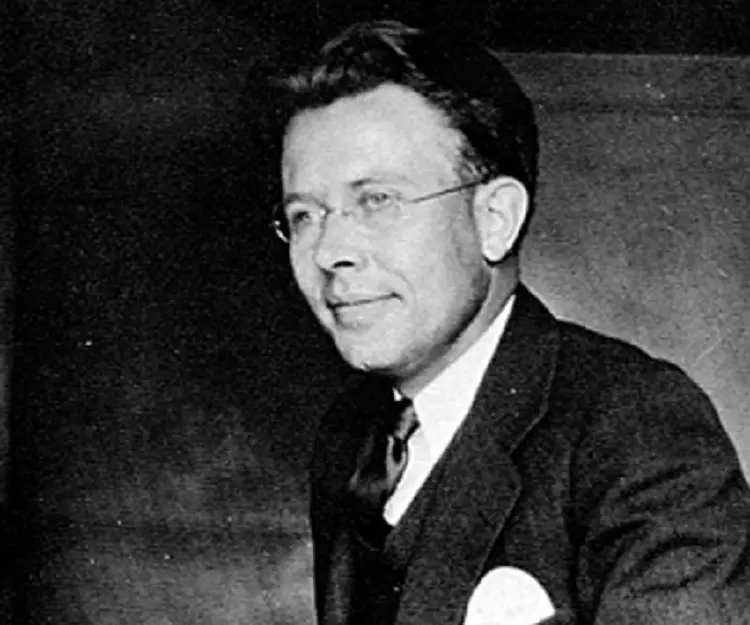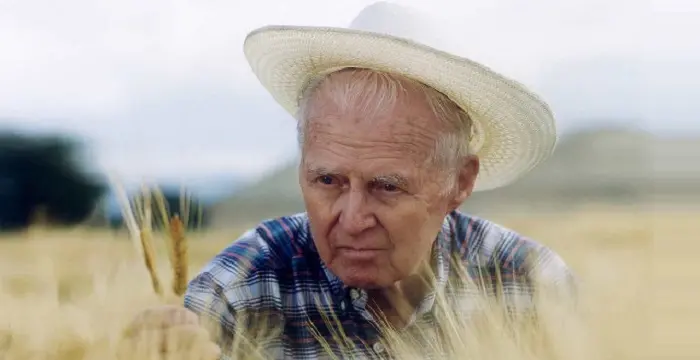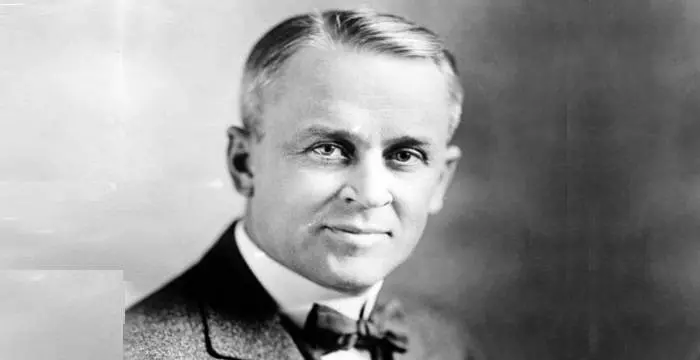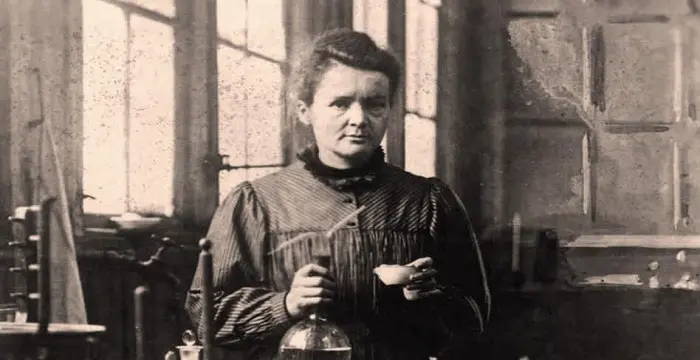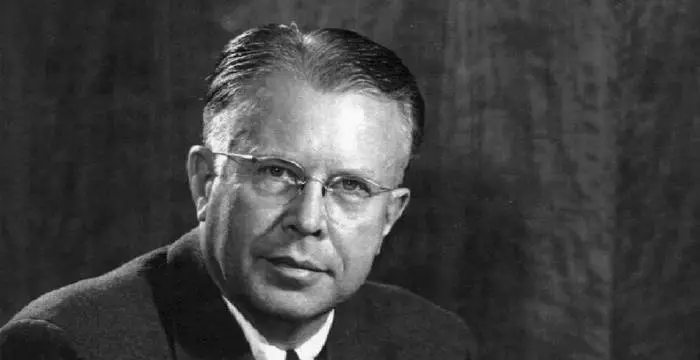
Ernest Lawrence - Scientists, Birthday and Personal Life
Ernest Lawrence's Personal Details
Ernst Lawrence was an American nuclear scientist who won the Nobel Prize in Physics in 1939 for his invention of the cyclotron
| Information | Detail |
|---|---|
| Birthday | August 8, 1901 |
| Died on | August 27, 1958 |
| Nationality | American |
| Famous | University Of Chicago, University Of Minnesota, Yale University, Scientists, Physicists |
| Siblings | John H. Lawrence |
| Known as | Ernest Orlando Lawrence, Ernest O. Lawrence |
| Universities |
|
| Notable Alumnis |
|
| Founder / Co-Founder |
|
| Birth Place | Canton |
| Gender | Male |
| Father | Carl Gustavus Lawrence |
| Mother | Gunda Lawrence |
| Sun Sign | Leo |
| Born in | Canton |
| Famous as | Physicist |
| Died at Age | 57 |
// Famous University Of Chicago
Satya Nadella
Satya Nadella is the current CEO of Microsoft. This biography provides detailed information about his childhood, profile, career, net worth & timeline
Emily Greene Balch
Emily Greene Balch was an American economist, sociologist and pacifist who won the 1946 Nobel Peace Prize. This biography of Emily Greene Balch provides detailed information about her childhood, life, achievements, works & timeline.
Susan Sontag
Susan Sontag is an American critical essayist, cultural analyst, novelist, political activist, filmmaker and playwright of international repute. Read on to find out more about her childhood, career, profile and timeline.
Ernest Lawrence's photo
Who is Ernest Lawrence?
Ernst Lawrence was an American nuclear scientist who won the Nobel Prize in Physics in 1939 for his invention of the cyclotron. Although he started his college education with chemistry he soon changed to physics and ultimately earned his PhD in physics from the University of Yale. While working as an associate professor at the University of California, 28 year old Lawrence developed a circular particle accelerator, later termed cyclotron. The invention, not only earned him Nobel Prize, but also the full professorship at the age of 29 and directorship at the Radiation Laboratory at 35. Although he received the patent for his new invention, he never accepted any royalty from it. Instead, he concentrated on developing larger and more powerful cyclotrons and helped others to build them. Once the World War II started, he got involved in number of defense projects. He was inducted into the Manhattan Project, and the Uranium-235 required for making the Hiroshima bomb came mostly from his laboratory at Berkeley. He also advocated strongly for manufacturing the Hydrogen bomb. At the same time, he was equally interested in developing nuclear medicine and collaborated with this brother in this.
// Famous University Of Minnesota
Russell M. Nelson
Russell M. Nelson is an American religious leader, author, and philanthropist. Check out this biography to know about his birthday, childhood, family life, achievements and fun facts about him.
Norman Borlaug
Norman Borlaug was an American biologist known as the “Father of the Green Revolution”. This biography of Norman Borlaug provides detailed information about his childhood, life, achievements, works & timeline.
Robert M. Pirsig
Robert M. Pirsig is a contemporary American writer and philosopher. Read this biography to learn more about his childhood, life, works and timeline.
Childhood & Early Life
Ernst Orlando Lawrence was born on August 8, 1901 in Canton, South Dakota. Both his parents, Carl Gustavus and Gunda (née Jacobson) Lawrence, were of Norwegian descent. Initially they were teachers at a Canton school. Later Carl Gustavus became Superintendent of Public Education in South Dakota.
Ernst Orlando had a younger brother named John Hundale Lawrence, who grew up to become a physician. He later became well-known for his pioneering work in the field of nuclear medicine.
According to his mother, Ernst was ‘born grown up’. He was also incessantly curious, very persistent and full of enthusiasm. Ernst’s best friend was Merle Tuve, who later became a famous nuclear physicist. Together the two children built their own shortwave radio transmitting station.
Ernst had his early education at Canton High School. After passing out from there, he first enrolled at St. Olaf College in Northfield, Minnesota and studied there for one year only. In 1919, he shifted to University of South Dakota and passed out from there in 1922 with a bachelor degree in Chemistry.
While studying chemistry at University of Dakota, Ernst was noticed by Dean Lewis E. Akeley. He tutored Ernst in private. Under his influence, Ernst began to take interest in physics and after graduation he enrolled at the University of Minnesota with physics and received his postgraduate degree in 1923.
During this period, Ernst was highly influenced by William Francis Gray Swann, who was noted for his work in cosmic rays and high energy physics. After earning his master’s degree, Ernst followed Swann first to University of Chicago and then to Yale Universtity.
In 1925, he received his Ph. D degree from Yale. He wrote his doctoral thesis on the photoelectric effect in potassium vapor. He then received National Research Council Fellowship on the recommendation of Swann and continued working at Yale.
Career
In 1925, Ernst Lawrence started his career as National Research Fellow at the Yale University. In 1927, he was made an Assistant Professor at Yale. Although by this time he had received better offers from University of Washington and University of California he chose to remain at Yale.
Ultimately in 1928, he shifted to the University of California, Berkley as Associate Professor of Physics. Here he continued his research on photo electricity and together with his students published a number of papers in this field. However, very soon he diverted to a very different branch.
In 1929, while sitting in a library one evening he came across a design that interested him a great deal. Very soon, he, along with his two students, invented a circular particle accelerator that could speed up nuclear particles to very high velocity without using high voltage. Known as cyclotron, the device opened scope for many new developments.
In 1930, he was made a full professor by the University of California. Incidentally, he was the youngest man to hold such a post. Lawrence continued with his research in nuclear physics and concentrated on building larger and more powerful cyclotrons.
By 1932, his team was able to disintegrate lithium using cyclotron at Berkeley Laboratory. Subsequently heavier metals began to be disintegrated there. Moreover, using the cyclotron the scientists could accurately measure binding energies of the nuclei and also the reaction energy. These experiments paved the way for faster growth of nuclear physics.
In 1934, he received the patent for his cyclotron. However, he never took any royalty from it. Instead he assigned it to the Research Corporation for Science Advancement, which had funded much of his early work. He had repeatedly said, "Patent-consciousness might turn back the pages of progress."
In February 1936, Harvard University made him an attractive offer. To retain Lawrence, University of California agreed to improve the infrastructure. Until then, Lawrence and his team had been working in an old building. The Radiation Laboratory, with all modern amenities, was officially established on July 1, 1936 with Lawrence as its Director.
While the University agreed to provide a yearly grant of $20,000, Lawrence cut cost by staffing his laboratory with graduate students, junior faculties and others willing to work for anything. He treated each employee as a team member and at the same time, concentrated on building bigger and bigger cyclotrons.
By May 1939, he had built a 60 inch cyclotron. He then bombarded iron particles to produce first radioactive isotopes in June. Along with nuclear research he also encouraged research into the use of isotopes for therapeutic purpose. In this, he worked closely with his brother John Hundale Lawrence.
Once the World War II started, Lawrence got involved in military projects. In 1940, he helped to establish Radiation Laboratory at Massachusetts Institute of Technology. At the same time, he became personally involved with Manhattan Project, which was set up with the aim of developing atomic bomb.
In 1941, he became involved in anti submarine warfare program and placed many of his students at the underwater sound laboratories. At the same time, his Radiation Laboratory at Berkeley began to work 24 hours a day. He built bigger and stronger cyclotrons, one of which was used to produce meson artificially.
He also concentrated on perfecting Calutron, which was used to separate Uranuim-235 from ordinary uranium. Once that was done, the Radiation Laboratory at Berkeley worked overtime to produce Uranium-235 needed for making the Hiroshima bomb.
As the World War II ended Lawrence began his campaign for government sponsorship of large scientific projects. In this, he was successful to a large extent. When in 1946, the 186 inch cyclotron came into operation he once again started taking active participation in experiments, using deuteron stripping to discover nitrogen-17.
Lawrence was keen on developing more powerful hydrogen bomb and played a key role in the U.S. decision to embark on such a project. It was because of his intervention in 1952 that a second nuclear weapon laboratory was set up at Livermore; the first one being located Los Alamos.
Most of the key scientists at Livermore were his students from Berkeley. He spent his remaining years taking keen interest in the affairs of this new laboratory. Today, it is known as Lawrence Livermore National Laboratory.
Major Works
Ernst Lawrence is best known for his invention of cyclotrons. Until the invention of synchrotron in 1950, they were the most powerful particle accelerator. Even today, they are being used all over the world for production of particle beams in physics and nuclear medicine.
In addition, Lawrence invented a method for obtaining time intervals of three billionths of a second and another method for measuring the e/m ratio of the electron.
Awards & Achievements
Ernst Orlando Lawrence was awarded with the Nobel Prize in Physics in 1939 for his invention of cyclotron.
In 1937, he received Elliott Cresson Medal from the Franklin Institute and the Hughes Medal from the Royal Society.
In 1938, he was awarded the Comstock Prize in Physics by the National Academy of Sciences and in 1940, the Duddell Medal and Prize by the Royal Physical Society.
Besides, he also received the Holley Medal in 1942, the William Procter Prize in 1951, Faraday Medal in 1952, and the Enrico Fermi Award from the Atomic Energy Commission in 1957.
Personal Life & Legacy
In 1932, Ernst Lawrence married Mary Kimberly (Molly) Blummer. He first met her in 1926, while he was working as National Research Fellow at the University of Yale. Her father was the Dean of Yale School of Medicine.
Since she was only sixteen years old then, they could not get married immediately. Meanwhile, he shifted to California and got involved in his experiments. Ultimately, they got engaged in 1931 and got married the next year. The couple had six children: Eric, Margaret, Mary, Robert, Barbara, and Susan.
At the end of his life Lawrence was inflicted with chronic ulcerative colitis. He was also overworked. In spite of that when President Dwight D. Eisenhower asked him to go to Geneva to help negotiate a proposed Partial Nuclear Test Ban Treaty with the Soviet Union he agreed.
Unfortunately, he became ill at Geneva and was brought back to California after initial treatment. Surgery revealed that he had many other complications. He died on August 27, 1958, in Palo Alto, California.
Immediately after his death, the two nuclear research sites he helped to build were renamed as the Lawrence Livermore National Laboratory and the Lawrence Berkeley National Laboratory.
In 1959, the Ernest Orlando Lawrence Award was established in his memory.
In 1961, Chemical element number 103, discovered at the Lawrence Berkeley National Laboratory, was named in his honor as lawrencium.
Trivia
Towards the end of his life Lawrence contributed many new ideas in the field of color television. He also invented the color tube; but at that time it was not commercially viable and hence the idea was set aside.
// Famous Scientists
Juliane Koepcke
Juliane Koepcke is a German-Peruvian biologist, who was the lone survivor among the 92 passengers and crew of the ill-fated LANSA Flight 508 that crashed in the Peruvian rainforest on 24 December 1971. Know more about her life in this biography.
Henry Cavendish
Henry Cavendish was a theoretical chemist and physicist, renowned for discovery of hydrogen and calculation of the mass of earth. To know more about his childhood, profile, timeline and career read on
Konstantin Tsiolkovsky
Konstantin Tsiolkovsky was a Russian rocket scientist and a pioneer of astronautics. This biography provides detailed information about his childhood, family, personal life, career, achievements, etc.
Ernest Lawrence's awards
| Year | Name | Award |
|---|---|---|
Other | ||
| 0 | Elliott Cresson Medal | |
| 1951 | William Procter Prize for Scientific Achievement | |
| 1958 | Sylvanus Thayer Award | |
| 1952 | Faraday Medal | |
| 1938 | Comstock Prize in Physics | |
| 0 | 1939 - Nobel Prize in Physics | |
| 0 | 1957 - Enrico Fermi Award - Cyclotron | |
| 0 | 1937 - Hughes Medal | |
Ernest Lawrence biography timelines
- // 8th Aug 1901Ernst Orlando Lawrence was born on August 8, 1901 in Canton, South Dakota. Both his parents, Carl Gustavus and Gunda (née Jacobson) Lawrence, were of Norwegian descent. Initially they were teachers at a Canton school. Later Carl Gustavus became Superintendent of Public Education in South Dakota.
- // 1919 To 1922Ernst had his early education at Canton High School. After passing out from there, he first enrolled at St. Olaf College in Northfield, Minnesota and studied there for one year only. In 1919, he shifted to University of South Dakota and passed out from there in 1922 with a bachelor degree in Chemistry.
- // 1923While studying chemistry at University of Dakota, Ernst was noticed by Dean Lewis E. Akeley. He tutored Ernst in private. Under his influence, Ernst began to take interest in physics and after graduation he enrolled at the University of Minnesota with physics and received his postgraduate degree in 1923.
- // 1925In 1925, he received his Ph. D degree from Yale. He wrote his doctoral thesis on the photoelectric effect in potassium vapor. He then received National Research Council Fellowship on the recommendation of Swann and continued working at Yale.
- // 1925 To 1927In 1925, Ernst Lawrence started his career as National Research Fellow at the Yale University. In 1927, he was made an Assistant Professor at Yale. Although by this time he had received better offers from University of Washington and University of California he chose to remain at Yale.
- // 1926 To 1932In 1932, Ernst Lawrence married Mary Kimberly (Molly) Blummer. He first met her in 1926, while he was working as National Research Fellow at the University of Yale. Her father was the Dean of Yale School of Medicine.
- // 1928Ultimately in 1928, he shifted to the University of California, Berkley as Associate Professor of Physics. Here he continued his research on photo electricity and together with his students published a number of papers in this field. However, very soon he diverted to a very different branch.
- // 1929In 1929, while sitting in a library one evening he came across a design that interested him a great deal. Very soon, he, along with his two students, invented a circular particle accelerator that could speed up nuclear particles to very high velocity without using high voltage. Known as cyclotron, the device opened scope for many new developments.
- // 1930In 1930, he was made a full professor by the University of California. Incidentally, he was the youngest man to hold such a post. Lawrence continued with his research in nuclear physics and concentrated on building larger and more powerful cyclotrons.
- // 1931Since she was only sixteen years old then, they could not get married immediately. Meanwhile, he shifted to California and got involved in his experiments. Ultimately, they got engaged in 1931 and got married the next year. The couple had six children: Eric, Margaret, Mary, Robert, Barbara, and Susan.
- // 1932By 1932, his team was able to disintegrate lithium using cyclotron at Berkeley Laboratory. Subsequently heavier metals began to be disintegrated there. Moreover, using the cyclotron the scientists could accurately measure binding energies of the nuclei and also the reaction energy. These experiments paved the way for faster growth of nuclear physics.
- // 1934In 1934, he received the patent for his cyclotron. However, he never took any royalty from it. Instead he assigned it to the Research Corporation for Science Advancement, which had funded much of his early work. He had repeatedly said, "Patent-consciousness might turn back the pages of progress."
- // 1st Jul 1936In February 1936, Harvard University made him an attractive offer. To retain Lawrence, University of California agreed to improve the infrastructure. Until then, Lawrence and his team had been working in an old building. The Radiation Laboratory, with all modern amenities, was officially established on July 1, 1936 with Lawrence as its Director.
- // 1937In 1937, he received Elliott Cresson Medal from the Franklin Institute and the Hughes Medal from the Royal Society.
- // 1938 To 1940In 1938, he was awarded the Comstock Prize in Physics by the National Academy of Sciences and in 1940, the Duddell Medal and Prize by the Royal Physical Society.
- // 1939Ernst Orlando Lawrence was awarded with the Nobel Prize in Physics in 1939 for his invention of cyclotron.
- // May 1939By May 1939, he had built a 60 inch cyclotron. He then bombarded iron particles to produce first radioactive isotopes in June. Along with nuclear research he also encouraged research into the use of isotopes for therapeutic purpose. In this, he worked closely with his brother John Hundale Lawrence.
- // 1940Once the World War II started, Lawrence got involved in military projects. In 1940, he helped to establish Radiation Laboratory at Massachusetts Institute of Technology. At the same time, he became personally involved with Manhattan Project, which was set up with the aim of developing atomic bomb.
- // 1941In 1941, he became involved in anti submarine warfare program and placed many of his students at the underwater sound laboratories. At the same time, his Radiation Laboratory at Berkeley began to work 24 hours a day. He built bigger and stronger cyclotrons, one of which was used to produce meson artificially.
- // 1946As the World War II ended Lawrence began his campaign for government sponsorship of large scientific projects. In this, he was successful to a large extent. When in 1946, the 186 inch cyclotron came into operation he once again started taking active participation in experiments, using deuteron stripping to discover nitrogen-17.
- // 1950Ernst Lawrence is best known for his invention of cyclotrons. Until the invention of synchrotron in 1950, they were the most powerful particle accelerator. Even today, they are being used all over the world for production of particle beams in physics and nuclear medicine.
- // 1952Lawrence was keen on developing more powerful hydrogen bomb and played a key role in the U.S. decision to embark on such a project. It was because of his intervention in 1952 that a second nuclear weapon laboratory was set up at Livermore; the first one being located Los Alamos.
- // 27th Aug 1958Unfortunately, he became ill at Geneva and was brought back to California after initial treatment. Surgery revealed that he had many other complications. He died on August 27, 1958, in Palo Alto, California.
// Famous Physicists
Henry Cavendish
Henry Cavendish was a theoretical chemist and physicist, renowned for discovery of hydrogen and calculation of the mass of earth. To know more about his childhood, profile, timeline and career read on
Walter Kohn
Nobel Laureate Walter Kohn was an Austrian-born American theoretical chemist and physicist. Check out this biography to know about his childhood, life, achievements, works & timeline.
Nikola Tesla
Nikola Tesla was a Serbian-American inventor, best known for his development of alternating current electrical systems. This biography of Nikola Tesla provides detailed information about his childhood, life, achievements, works & timeline.
Robert Andrews Millikan
Robert Andrews Millikan was an eminent American experimental physicist who won the Nobel Prize for Physics in 1923 for his work on photoelectric effect. Check out this biography to know about his childhood, life, achievements, works & timeline.
Isaac Newton
Isaac Newton was an English scientist and mathematician, who discovered gravitation and Newtonian Mechanics. Read this biography to find more on his life.
Marie Curie
Marie Curie was a Physicist and Chemist, who was world renowned for her work on radioactivity. She also was the winner of two Nobel Prize. Read this biography to get info about her life and profile.
Ernest Lawrence's FAQ
What is Ernest Lawrence birthday?
Ernest Lawrence was born at 1901-08-08
When was Ernest Lawrence died?
Ernest Lawrence was died at 1958-08-27
Where was Ernest Lawrence died?
Ernest Lawrence was died in Palo Alto
Which age was Ernest Lawrence died?
Ernest Lawrence was died at age 57
Where is Ernest Lawrence's birth place?
Ernest Lawrence was born in Canton
What is Ernest Lawrence nationalities?
Ernest Lawrence's nationalities is American
Who is Ernest Lawrence siblings?
Ernest Lawrence's siblings is John H. Lawrence
What was Ernest Lawrence universities?
Ernest Lawrence studied at University Of Chicago,University Of Minnesota,Yale University, Yale University, University of South Dakota, University of Minnesota, University of Chicago, St. Olaf College
What was Ernest Lawrence notable alumnis?
Ernest Lawrence's notable alumnis is University Of Chicago, University Of Minnesota, Yale University
Which company or organization was founded by Ernest Lawrence?
Ernest Lawrence was the founder/co-founder of Lawrence Livermore National Laboratory, Lawrence Berkeley National Laboratory
Who is Ernest Lawrence's father?
Ernest Lawrence's father is Carl Gustavus Lawrence
Who is Ernest Lawrence's mother?
Ernest Lawrence's mother is Gunda Lawrence
What is Ernest Lawrence's sun sign?
Ernest Lawrence is Leo
How famous is Ernest Lawrence?
Ernest Lawrence is famouse as Physicist



